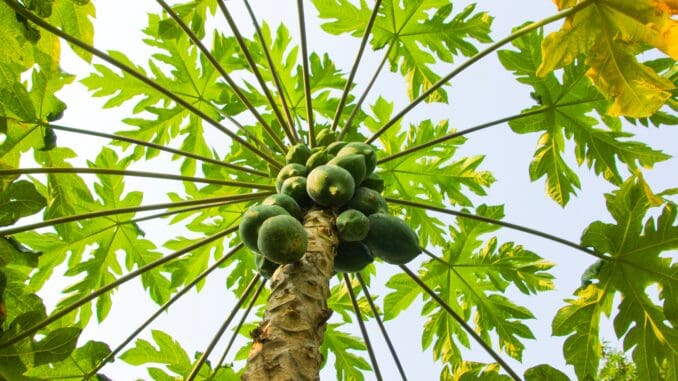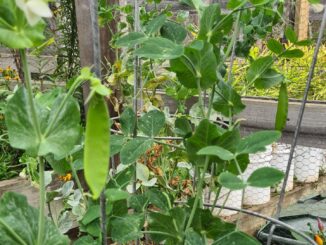
Our climate here in Beaudesert is well-suited for growing pawpaw or papaya.
We love the red pawpaw which thrives in our warm temperatures but they do need protection from frost. Choose a sunny spot in your garden, as pawpaws require lots of sun to produce high yields.
Ideally, the location should receive at least six hours of direct sunlight each day. Pawpaws also need protection from strong winds, which can damage the plants and reduce fruit production. Planting near a windbreak or on the sheltered side of a structure can help.
Pawpaws prefer well-drained, slightly acidic soil. Before planting, it’s important to prepare the soil by incorporating organic matter like compost or well-rotted manure to improve fertility and drainage. If your soil is heavy clay or tends to retain water, consider raising the planting area to avoid water logging, which can lead to root rot.
Pawpaws can be grown from seeds, but for quicker results, it’s best to plant seedlings or grafted plants. When planting, space the pawpaws about two to three metres apart to allow ample room for growth and airflow, which helps prevent diseases. After planting, water the young plants thoroughly to help them establish in their new environment.
Pawpaws have a shallow root system and require consistent moisture, especially during flowering and fruit development. Watering regularly ensures the soil remains moist but not waterlogged. Mulching around the base of the plant with organic material like straw, sugar cane-mulch or wood chips can help retain moisture and suppress weeds.
Applying fertiliser regularly during the growing season will ensure good levels of fruiting. We add compost or manure to provide a steady supply of nutrients. Pawpaws typically start producing fruit within nine to twelve months of planting. This can depend on the variety and growing conditions. The fruit is ready to harvest when it turns from green to yellow and gives slightly when gently pressed. Harvesting earlier is often ideal and they will ripen inside away from the wildlife.





